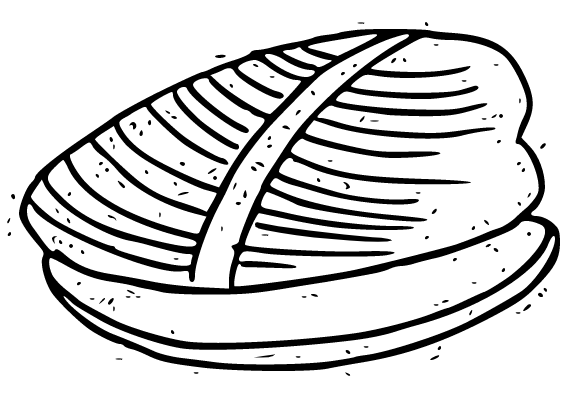-

-
The Discerning Mollusk's Guide to Arts & Ideas
-


The Creative Act: A Way of Being
Rick Rubin
Penguin Press, 2023
he situation for artists trying to learn how to be better artists is a microcosm of the human situation at this moment in time. The use of computers and cell phones, along with the unending growth of the internet and streaming, and the globalization of the economy, have brought almost all extant human information to our fingertips. Yet having instantaneous access to nearly everything we’ve done as a species does not help us parse that bottomless pit of data into useful facts, knowledge, or—most necessary of all—wisdom. To put it another way, our culture (if that is the right word) is badly in need of curating. And many of us engage in that task by putting together literary magazines like Exacting Clam or writing reviews like this one. Some of us do craft talks as well, and heaven knows craft matters in art as in everything else.
All that is well and good. But what about the thing that precedes craft, the creative impulse itself? Can anything of real value be taught or studied or learned about that?
I am happy to report that the answer is yes. The Creative Act: A Way of Being reveals Rick Rubin to be the preeminent guru of creativity in our time. Not since The Artist’s Way by Julia Cameron has anyone written a book so inspiring, accessible, useful and truly helpful to those of us laboring in the vineyards of the arts. Rubin is like a Zen master drunk on the beauty of art and sharing a thousand koans with his disciples out of a pure generosity of spirit.
Does it matter how he acquired this wisdom? Not really. But where he came from is interesting, if only because it might cause some people’s heads to explode, trying to put his background together with the old soul that wrote this book. Rubin has been a producer of popular music for more than four decades. He was not only present at the birth of hip hop, he was one of the fathers as a co-founder of Def Jam recordings. He has worked with Run-DMC, the Beastie Boys, Public Enemy, Metallica, Aerosmith, Audioslave, the Strokes and Weezer, among countless others.
Most memorably, for my money, he found a niche working with popular artists who might appear to be all washed up creatively, coaxing out of them a renewed vision and some of their best work. I’m thinking here not only of Johnny Cash in his final incredible decade but also Donovan (Sutras) and Neil Diamond (12 Songs).
Many producers are known for a particular sound. For example, Laurie Latham, who worked with the Stranglers, Echo and the Bunnymen and Squeeze, can be spotted instantly by the hypnotic, layered gloss of the keyboards. Steve Lillywhite and Hugh Padham will forever be known as the producer and engineer (respectively) who created the “gated reverb” sound for Phil Collins’ drums (with a little help from their friend Peter Gabriel).
While some have identified Rubin by what they call his stripped-down sound, I don’t believe he has a personal sound at all. I think he has the much rarer gift of helping an artist look within to find the best they are capable of. So yes, he is in some sense responsible for the Red Hot Chili Peppers. But then, as a uniquely selfless producer, he was simply helping them be the best Red Hot Chili Peppers they could be.
What a music producer has in common with other artists is the ability to listen, both inwardly and outwardly, to be fully attentive to the moment, with no preconceptions. For some insight into Rubin’s ability to listen, check out his in-depth interview with Paul McCartney, available in three chapters on Hulu. At one point Rubin plays the recording of “While My Guitar Gently Weeps” from what has come to be known as the Beatles’ White Album. It’s a George Harrison song, of course, arguably the one that revealed his full maturity as a songwriter. The casual listener might think, “This is a groovy little number, nice guitar solo” (which in fact was played not by Harrison but by his pal Eric Clapton). Does the casual listener even hear the bassline played by Paul? Well, Rick Rubin does. As he and Paul listen to the original multitrack session tape with the bass track turned up, it’s a revelation for the viewer. Paul’s bass part is absolutely insane, like a whole different song going on within the song. And in typical Beatles fashion, it’s the mix of these two elements, with the audacity of the bassline counterpoint just below the threshold of consciousness, that helps make the song so good.
Rubin goes on to note that no normal session musician would ever have played a bass part like that. His comment pertains both to Paul’s virtuosity on his main instrument and also to the unusually open and nourishing creative environment within the Beatles, where Ringo or a roadie or a second assistant engineer could come up with a good idea and have it instantly accepted.
You might say that Rubin’s goal with this book is to help every artist—indeed, every human being—attain this kind of openness within their own psyche. The epigraph he has chosen for the book is a good indicator of this: “The object isn’t to make art, it’s to be in that wonderful state which makes art inevitable” (Robert Henri). In other words, a way of being precedes the creative act.
The table of contents is not called that but rather “78 Areas of Thought.” Right from the start, he declares that creativity is not something possessed only by artists, in a chapter called “Everyone Is a Creator.” He states, “Creativity is a fundamental aspect of being human.” Thus, while this book will get especially heavy use from painters, composers and writers, it will also provide tools for entrepreneurs to create new products and services, or coaches to create new plays for their teams. It really does have something for everybody. It is very tempting to simply go on quoting it endlessly but I’d much rather you make your own fruitful discoveries in its pages. Rick Rubin has earned his place on your bookshelf next to Julia Cameron. Make room for him.

After years of writing humor for the New Yorker, the Onion and McSweeney’s Internet Tendency, among others, Kurt Luchs returned to his first love, poetry, like a wounded animal crawling into its burrow to die. In 2017 Sagging Meniscus Press published his humor collection, It’s Funny Until Someone Loses an Eye (Then It’s Really Funny), which has since become an international non-bestseller. In 2019 his poetry chapbook One of These Things Is Not Like the Other was published by Finishing Line Press, and he won the Atlanta Review International Poetry Contest, proving that dreams can still come true and clerical errors can still happen. His first full-length poetry collection, Falling in the Direction of Up, is out from Sagging Meniscus as of May 2021.